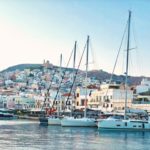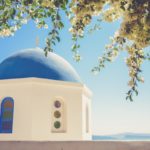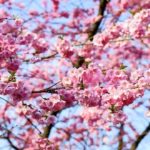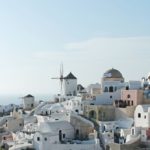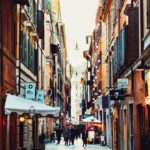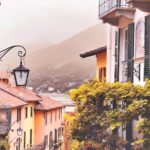A Day in Parga, Greece
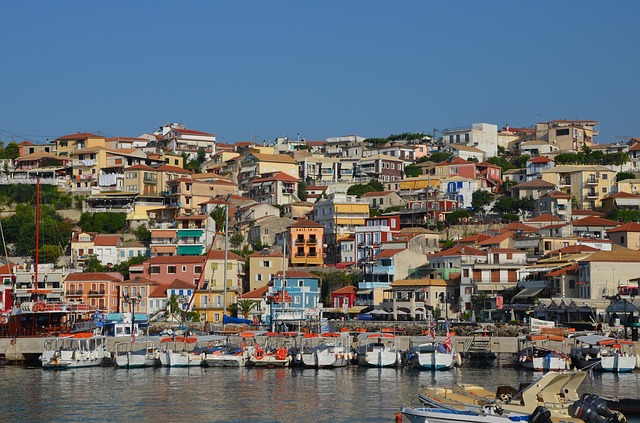
Travel agents describe Parga as picturesque, as a paradise. It certainly is both those things, exuding history and boasting scenic views. Parga’s Venetian Castle stands over the city as a reminder of historical times, of the need for protecting these areas from invasion and as a tall, protective figure over Parga itself. Located on Greece’s western coast, Parga is just a short ferry ride away from the islands of Paxi and Corfu.
Parga’s main tourist hub makes you feel as if you’re not actually in a small town, but in an overly-crowded city with roads so narrow that it is impossible for two cars to pass each other. Swimmers and sunbakers cover the length of the beach directly across from the island which can be reached by just swimming over.
Parga’s location near Corfu and its proximity to the border with Albania meant that it endured a number of attacks and was taken over by Normans, Venetians and finally the Ottoman Empire in 1817.
Its history is turbulent, having changed hands many times as a result of wars. Parga’s location near Corfu and its proximity to the border with Albania meant that it endured a number of attacks and was taken over by Normans, Venetians and finally the Ottoman Empire in 1817.
The people of Parga, however, were a defiant bunch and they refused to live under the tyranny of the Turks. Unable to take back their town, they escaped to Corfu just two years later. They took with them their valuables, ships, icons, and the ashes of their ancestors. This last item required some planning.
In order for them not to leave their ancestors behind, they had to dig them up, burn them, and then store their ashes. Parga didn’t achieve its freedom until 1913. It is clearly home to proud people, people who wanted their independence and refused to live under tyranny.
Modern Parga is bustling, colourful and filled with shops. I highly recommended seeing Parga from above. The colourful houses on the harbour, with flowers in full bloom and the white church on a small island off the beach, stand out against the blue ocean. But how do you reach a point high enough to see this view?
They took with them their valuables, ships, icons, and the ashes of their ancestors. This last item required some planning. In order for them not to leave their ancestors behind, they had to dig them up, burn them, and then store their ashes.
It requires only a small climb up to the Venetian castle. The castle’s exterior fortified walls still stand, and some structures also remain, such as the rooms. The sign outside says to explore at your own risk: ‘Visitors may visit the Citadel (Kastro) at their own liability.’
It sounded good to me, I love to explore a location unimpeded by barriers. I eagerly climbed up the stairs to explore the castle. It can be explored at your own pace, with no one there telling you where to go and no areas cordoned off.
I had an enjoyable swim on Parga’s main beach. The beach is called Krioneri. It lived up to its name, as Krioneri means ‘cold water’.
There were numerous paths to follow, steps to climb up and down. I saw only four others who braved the walk up the castle and we all went in different directions. As long as you’re careful, watch your step, and are wearing appropriate shoes, the castle is a fantastic place to explore.
After my morning visit to the castle, I went back down into town and cooled off at the beach. It was filled with beach goers, the cafés along the water were serving food and snacks, people were wandering through the streets, shopping and enjoying the sights and sounds.
I had an enjoyable swim on Parga’s main beach. The beach is called Krioneri. It lived up to its name, as Krioneri means ‘cold water’. I wasn’t quite brave enough to swim out to the island where the church of the Virgin Mary stands. The island is known as Panagia Island. Panagia is one of the titles of the Virgin Mary meaning ‘All Holy’.
It is the sheer number of colours that stand out to me in Parga, they jump out like a kaleidoscope as you take in the beaches, the tourist hub, villages and mountains in harmony
Others had swum out and got onto the island. It’s a rocky island, with green trees growing on either side of the church. It looks like a small area of green jutting out of the water, a reminder of land that may have existed before the water took over, leaving the rocky island as the only survivor.
There are small rocks visible in the water but the island of Panagia is the largest piece of rock, it is uninhabited, the church being the only structure on it. It is the sheer number of colours that stand out to me in Parga, they jump out like a kaleidoscope as you take in the beaches, the tourist hub, villages and mountains in harmony.
A Day in Parga, Greece top photo credit: pixabay.com
Have you traveled to Parga, Greece? What were your impressions? Email us at editor@pinkpangea.com for information about sharing your experience and advice with the Pink Pangea community. We can’t wait to hear from you.

